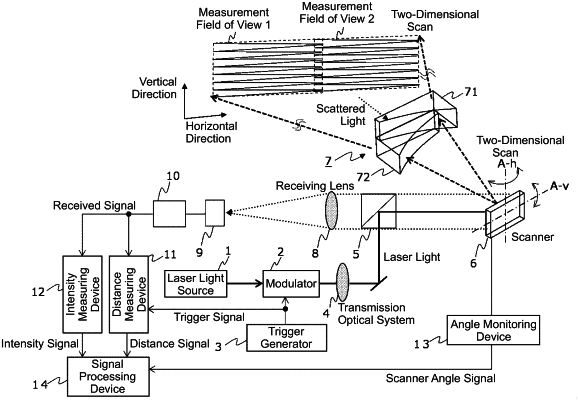| CPC G01S 7/4817 (2013.01) [G02B 26/101 (2013.01)] | 5 Claims |

|
1. A laser radar device comprising:
a light source to output laser light;
a scanner to cause the laser light to scan;
a first optical system to receive the laser light caused to scan by the scanner and incident on the first optical system, and emit the incident laser light in such a manner that a horizontal component of the incident laser light is different from a horizontal component of the laser light to be emitted; and
a second optical system to receive the laser light caused to scan by the scanner and incident on the second optical system, and emit the incident laser light in such a manner that an incident area of the incident laser light in the horizontal direction is the same as an incident area of the first optical system in the horizontal direction, and an emission area of the incident laser light is different from an emission area of the first optical system, wherein
the first optical system emits the incident laser light in such a manner that a positive/negative sign of a vertical component of the incident laser light is different from a positive/negative sign of a vertical component of the laser light to be emitted, and
the second optical system emits the incident laser light in such a manner that an incident area of the second optical system in the vertical direction and an incident area of the first optical system in the vertical direction are symmetric with respect to an optical axis, and a positive/negative sign of a vertical component of the incident laser light is different from a positive/negative sign of a vertical component of the laser light to be emitted.
|